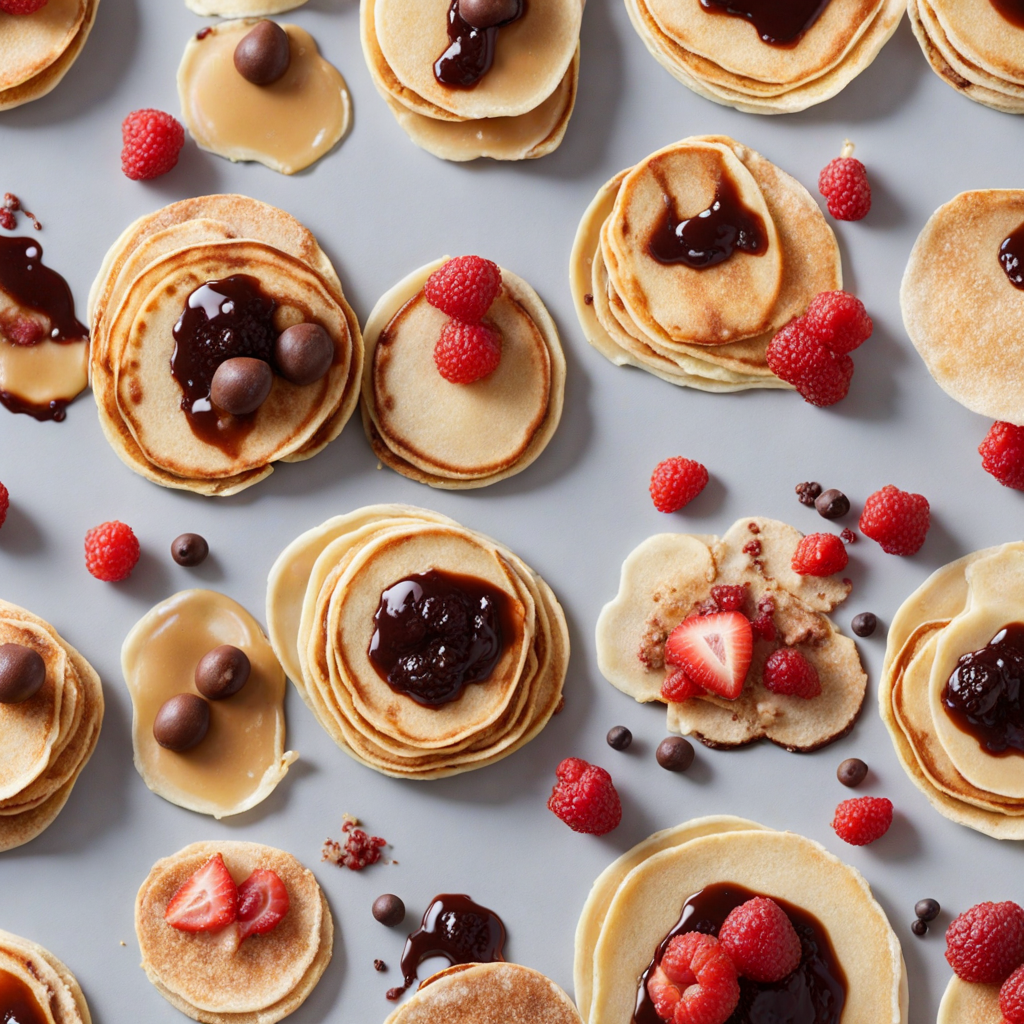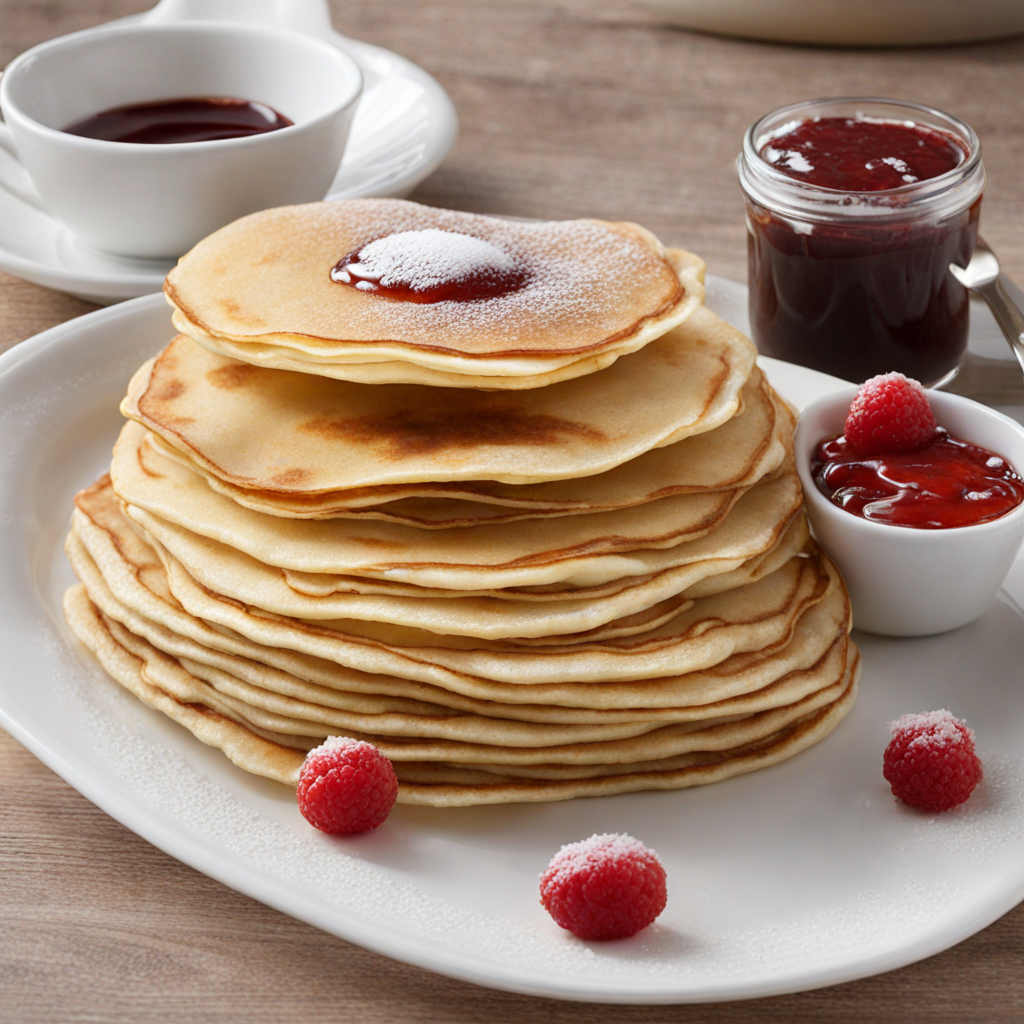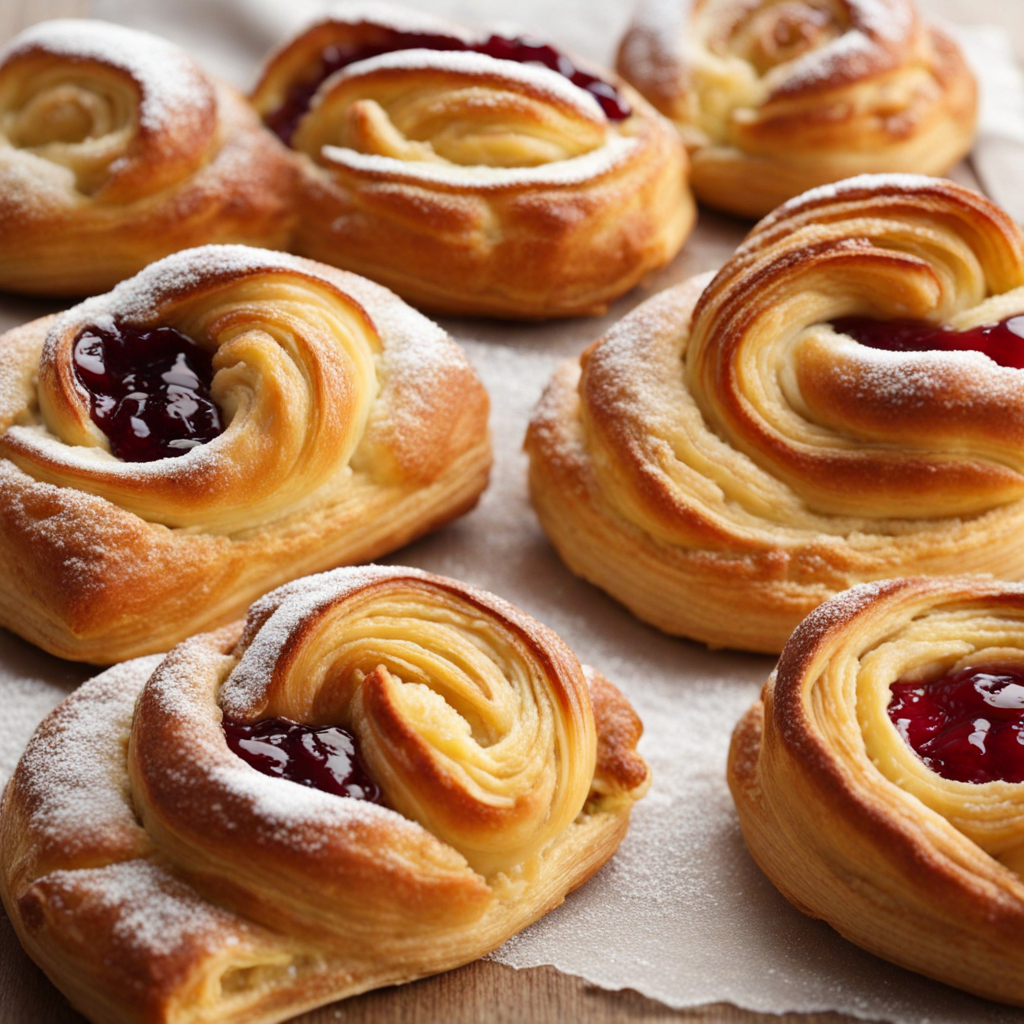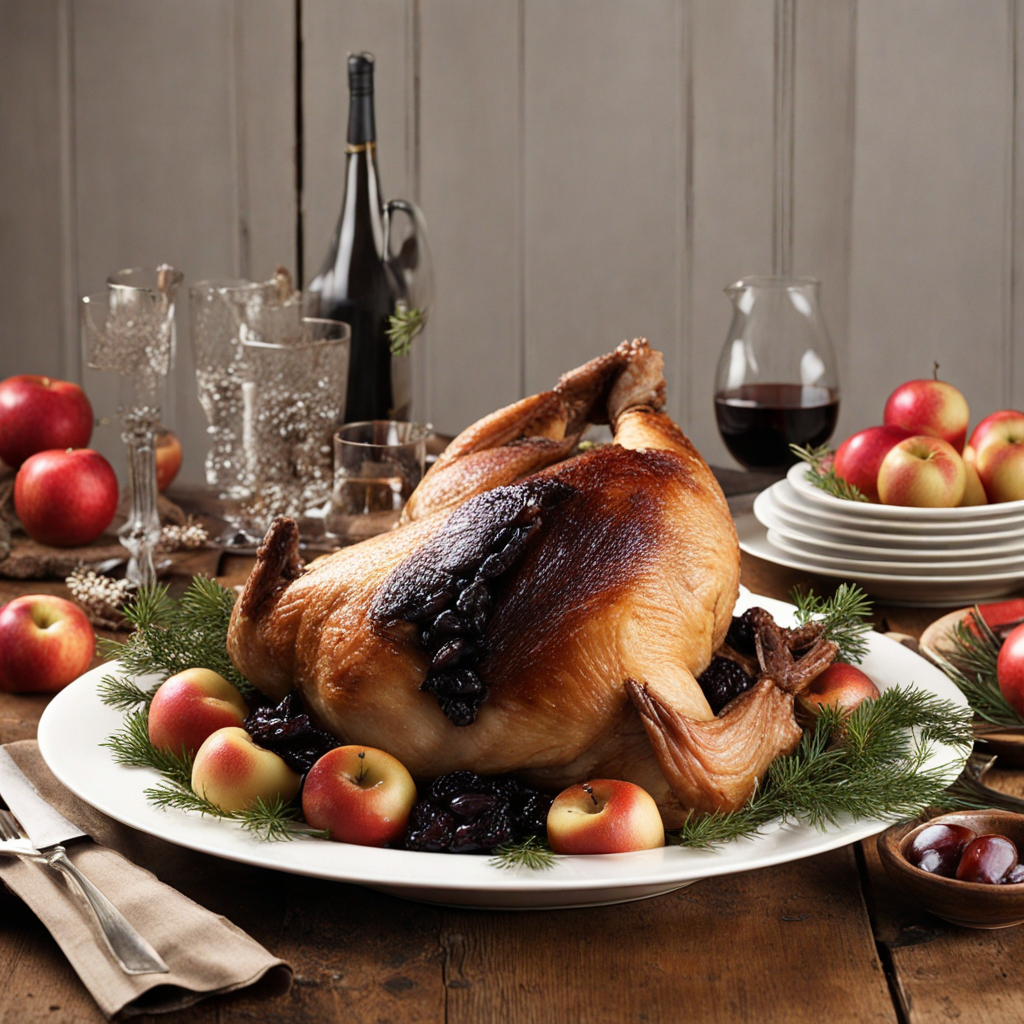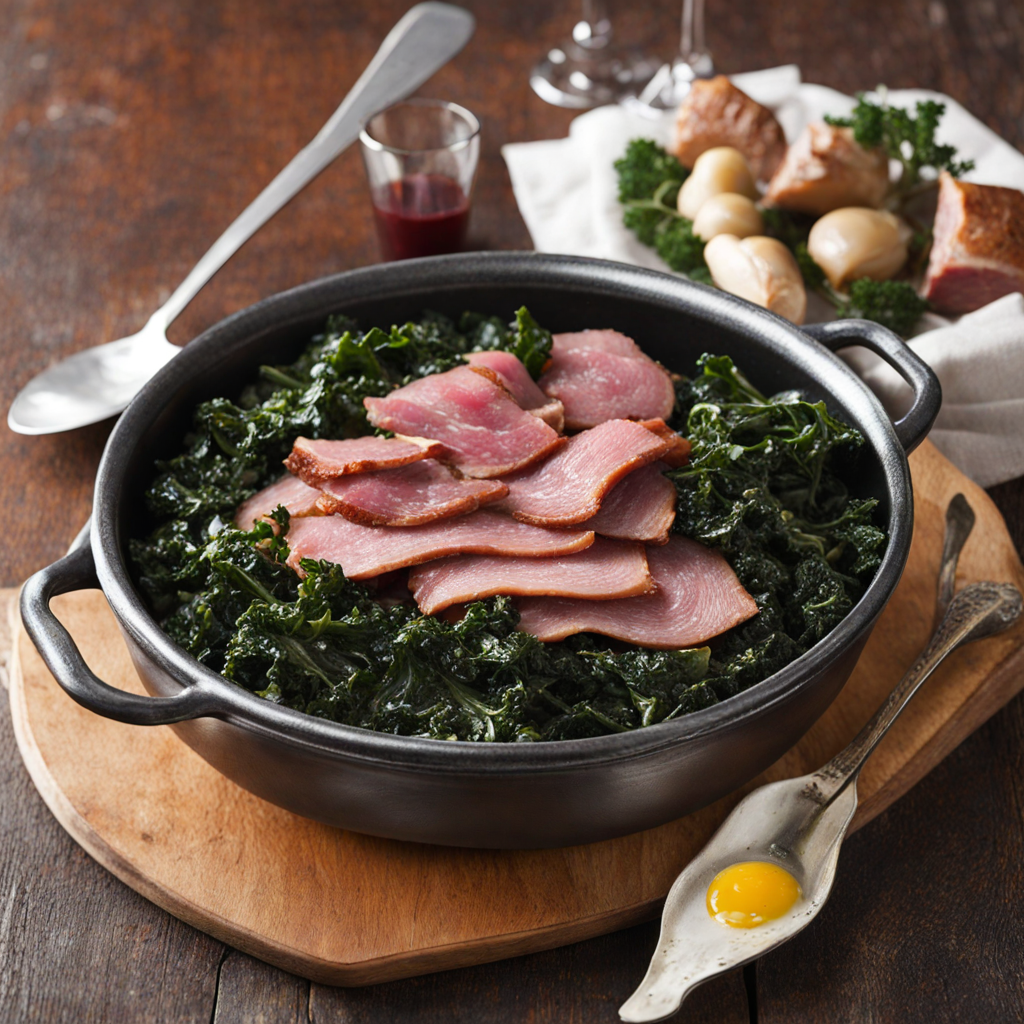Pandekager
Pandekager, the Danish version of pancakes, are a delightful culinary treat that captivates the palate with their unique texture and flavor. Unlike their thicker American counterparts, these pancakes are thin and crepe-like, offering a delicate and tender bite. Traditionally made from a simple batter of flour, eggs, milk, and a pinch of salt, they are cooked until golden brown, resulting in a slightly crispy exterior while remaining soft and pliable inside. The beauty of Pandekager lies not only in their texture but also in their versatility, allowing for endless fillings and toppings that can cater to both sweet and savory cravings. In Denmark, Pandekager are often served with a variety of delectable fillings. For a sweet experience, they might be spread with a layer of jam, Nutella, or whipped cream and rolled up with fresh fruits like strawberries, blueberries, or bananas tucked inside. Alternatively, they can be enjoyed with a sprinkle of sugar and a squeeze of lemon juice, creating a refreshing and tangy contrast. On the savory side, they can be filled with ingredients such as ham, cheese, or spinach, making them a satisfying option for any meal of the day. What truly sets Pandekager apart is their communal nature; they are often enjoyed during gatherings and festive occasions. The act of preparing and serving Pandekager can become a cherished ritual, with family and friends coming together to customize their own pancakes according to their tastes. This makes each bite not just a culinary experience but also a shared moment of joy and connection, reflecting the warmth of Danish hospitality. Discovering Pandekager is not just about tasting a new dish; it is about immersing oneself in a delightful tradition that celebrates flavor, creativity, and togetherness.
How It Became This Dish
The History of Pandekager: A Danish Culinary Tradition #### Origins in the Medieval Era The roots of Pandekager, the Danish version of pancakes, can be traced back to ancient civilizations, where flatbreads were cooked on hot stones or griddles. The word "pandekager" is derived from the Danish "pande," meaning pan, and "kager," meaning cakes. The concept of cooking flat cakes using batter is not unique to Denmark; variations exist across cultures, from the French crêpes to the American pancakes. However, the Danish pandekager boasts a distinctive identity shaped by local ingredients, culinary practices, and cultural significance. During the medieval era, Denmark was primarily an agrarian society, and food was closely tied to the seasons and available resources. Wheat and barley were staple grains, and the introduction of buckwheat and rye further diversified the local cuisine. Early pandekager were likely made with simple ingredients, including flour, water, and sometimes eggs or milk, depending on availability and economic status. These pancakes served as a practical food source that could be easily prepared in a variety of contexts – whether as a main dish, a side, or a dessert. #### Cultural Significance Pandekager gained prominence not only as a staple food but also as a cultural symbol. They became associated with family gatherings, celebrations, and communal meals. The act of making pandekager often involved more than just eating; it was an opportunity for social interaction, where families and friends came together to prepare and enjoy the dish. This communal aspect reinforced social bonds and created a sense of belonging within Danish culture. In Denmark, pandekager are often served in a variety of ways, showcasing the versatility of this simple dish. Traditionally, they are thin and delicate, similar to French crêpes, and can be filled or topped with an array of ingredients. Sweet fillings often include sugar, cinnamon, jam, fruit, or chocolate, while savory versions might feature cheese, smoked salmon, or vegetables. The adaptability of pandekager allows them to fit into various meals, from breakfast to dessert, and they are especially popular at festive occasions like birthdays and holidays. #### Development Through the Ages As Denmark entered the Renaissance and later the Enlightenment periods, culinary practices evolved. With increased trade and interaction with other countries, Danish cuisine began to incorporate new flavors and techniques. Sugar, once a luxury item, became more widely available, allowing for sweeter pandekager recipes. The introduction of new fruits and spices from distant lands further enriched the traditional pancake, making it both a beloved comfort food and a symbol of Denmark’s growing culinary sophistication. By the 19th century, pandekager had become a staple in Danish households, with various regional variations emerging. In some areas, the pancakes were thicker and heartier, while others maintained the classic thin texture. In rural communities, pandekager served as an essential food for laborers and farmers, providing a quick and sustaining meal during long workdays. The flexibility of the dish meant that it could be prepared with whatever ingredients were at hand, emphasizing the Danish ethos of resourcefulness and practicality in cooking. The 20th century brought about significant changes in the way pandekager were perceived and prepared. With the rise of industrialization and urbanization, many traditional cooking methods were altered or abandoned. However, the love for pandekager remained. New, more convenient cooking appliances made pancake preparation quicker and easier, allowing families to enjoy this beloved dish even amidst busy lifestyles. This era also saw the emergence of pancake mixes in stores, which simplified the process for many home cooks. #### The Modern Era and Contemporary Trends In recent decades, pandekager have experienced a renaissance, with chefs and home cooks alike experimenting with variations on this beloved dish. The influence of global cuisine has introduced innovative fillings and toppings, reflecting the diverse culinary landscape of modern Denmark. For instance, the fusion of global flavors has led to the incorporation of ingredients like avocado, pulled pork, and spicy salsas into savory pandekager. On the sweet side, toppings such as ice cream, whipped cream, and exotic fruits have become popular, showcasing a blend of tradition and modernity. Moreover, dietary trends have influenced the way pandekager are prepared. The rise of gluten-free and plant-based diets has led to the development of alternative recipes using flours such as almond, coconut, or chickpea, catering to a wider range of dietary preferences. These adaptations illustrate the enduring appeal of pandekager, demonstrating its ability to evolve while still maintaining its core essence as a comfort food. The cultural significance of pandekager continues to thrive in Denmark, with annual pancake festivals and events celebrating this culinary heritage. These gatherings not only pay homage to tradition but also encourage community engagement, allowing people of all ages to come together over a shared love of food. The dish serves as a reminder of Denmark’s rich culinary history and its ability to adapt and grow in the face of changing times. #### Conclusion Pandekager are more than just a delicious treat; they represent a tapestry of Danish history, culture, and tradition. From their humble beginnings in medieval kitchens to their contemporary status as a beloved dish across Denmark, pandekager embody the spirit of adaptability and community. As they continue to evolve, these pancakes remain a cherished symbol of Danish culinary heritage, inviting both locals and visitors to partake in their delightful taste and the warm memories they evoke. Whether enjoyed at a family gathering, a local festival, or a cozy café, pandekager are a testament to the enduring power of food to connect people and preserve culture through the ages.
You may like
Discover local flavors from Denmark


